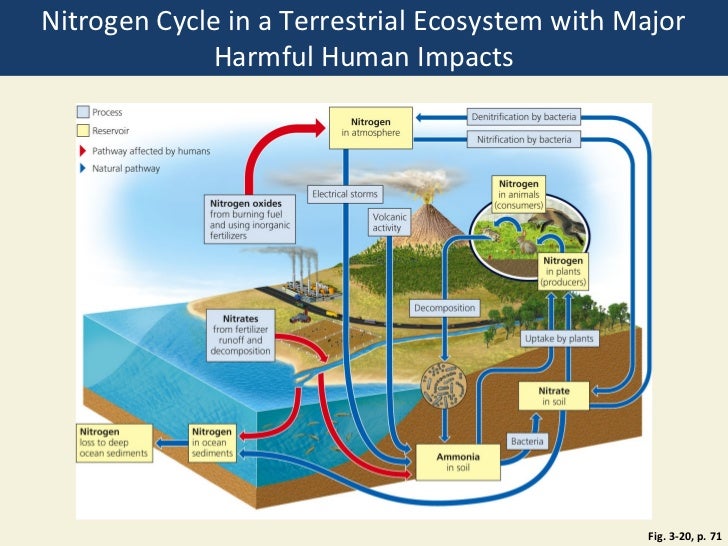Volcanoic eruption or industrial activities spill out sulphur dioxide gas (SO2 ) into atmosphere.
Rain brings it down forming acid rain.
Sulphate (SO42-) dissolve in soil and absorbed by plants for synthesis of protein.
Sulphate is reduced to organic R-SH group which used by plants to synthesis amino acid systeine , protein & coenzyme A.
The sulphur containing organic compounds are passed to herbivores when they eat plants.
The sulphur is transferred to carnivores along the foood chain.
When the animal and plants die , decomposed aerobically back to form sulphate.
Sulphur containing organic compounds in the organism may be anaerobically converted to hydogen sulphide (H2S )
Sulphate in soil will change into H2S by Desulphovibrio (sulphate reducing bacteria)
H2S are converted in the hotspring into sulphur by bacteria Chromatin or Chlorobium.
Rain brings it down forming acid rain.
Sulphate (SO42-) dissolve in soil and absorbed by plants for synthesis of protein.
Sulphate is reduced to organic R-SH group which used by plants to synthesis amino acid systeine , protein & coenzyme A.
The sulphur containing organic compounds are passed to herbivores when they eat plants.
The sulphur is transferred to carnivores along the foood chain.
When the animal and plants die , decomposed aerobically back to form sulphate.
Sulphur containing organic compounds in the organism may be anaerobically converted to hydogen sulphide (H2S )
Sulphur then oxidised by bacteria to form Sulphate back to the soil.
diagram from Bio 105 Chapter 3 (slideshare.net)

No comments:
Post a Comment